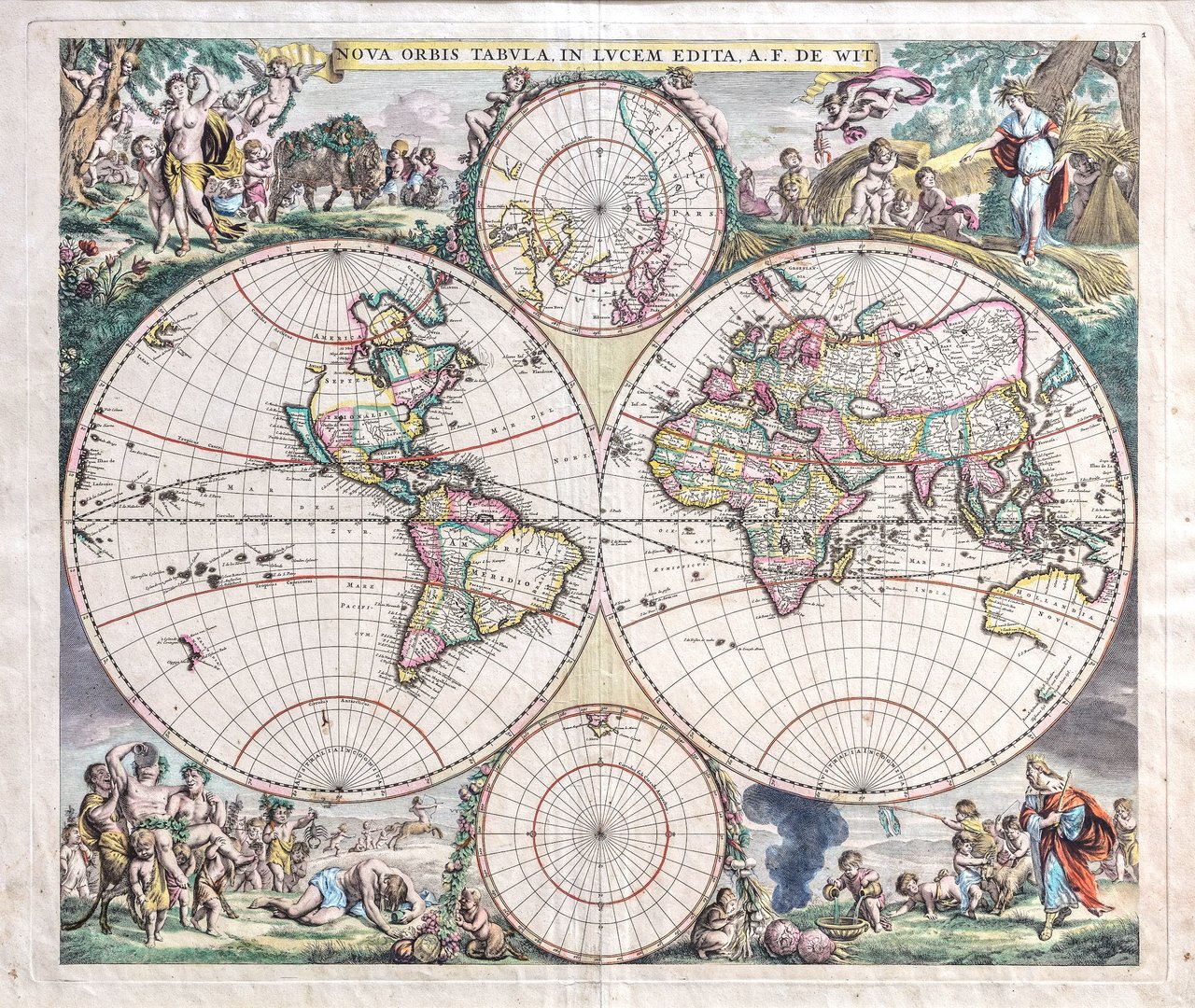Dettagli
Anno di pubblicazione
1670
Luogo di stampa
Amsterdam
Soggetto
Mappamondo, Planisfero
Descrizione
Incisione in rame, mm 464 x 546, dipinta a mano d’epoca. Primo stato su due, senza cherubini nelle cuspidi, a cui seguirà nel 1680 una nuova lastra con cornice e con numerosi aggiornamenti geografici delle nuove scoperte nel Pacifico e dell’interno del continente americano. In questo primo stato compaiono la California come isola secondo il prototipo di Briggs (che sarà poi sostituita dal modello sansoniano) e Anian con lo stretto nella costa nord-ovest del continente americano. Nel Pacifico non compare ancora la Nova Guinea nell’emisfero occidentale. Bellissimo esemplare con minimi restauri alla piegatura centrale in basso.<BR>Uno fra i più decorativi mappamondi olandesi seicenteschi. Shirley, R.W. The Mapping of the World pag. 468: “Il mappamondo di De Wit è uno dei più attraenti dell’epoca. Le brillanti scene agli angoli combinano le immagini delle quattro stagioni, degli elementi e dei segni zodiacali in modo equilibrato e naturalistico”.<BR>De Wit (1629 c. -1706) fu un cartografo e commerciante di mappe nato a Gouda, che lavorò e morì ad Amsterdam. Si trasferì in città nel 1648, dove aprì un’attività di stampa. A partire dagli anni ’60 è noto soprattutto per atlanti e piante di città olandesi. Dopo la morte di Frederic nel 1706, la moglie Maria gestì il negozio per quattro anni prima di venderlo poiché il figlio Franciscus non aveva alcun interesse per il negozio di mappe. La maggior parte delle tavole andò a Pieter Mortier, la cui ditta divenne Covens & Mortier, una delle più grandi case cartografiche del XVIII secolo.<BR>Bibliografia: Shirley 451<BR>Copper engraving, 464 x 546 mm, original colour. First state of two, without cherubs in the cusps, to be followed in 1680 by a new plate with frame and with numerous geographical updates of the new discoveries in the Pacific and the interior of the American continent. In this first state appear California as an island according to Briggs’ prototype (later to be replaced by the Sansonian model) and Anian with the strait on the northwest coast of the American continent. Nova Guinea does not yet appear in the Pacific in the western hemisphere. Beautiful example with minimal restorations to the central fold at the bottom.One of the most decorative 17th century Dutch globes. Shirley, R.W. The Mapping of the World p. 468: ‘De Wit’s globe is one of the most attractive of the period. The brilliant scenes in the corners combine the images of the four seasons, the elements and the signs of the zodiac in a balanced and naturalistic manner’. De Wit (c. 1629 -1706) was a cartographer and map dealer born in Gouda, who worked and died in Amsterdam. From the 1660s onwards, he is best known for atlases and plans of Dutch cities. After his death, most of the plates went to Pieter Mortier, whose firm became Covens & Mortier, one of the largest map houses of the 18th century. Bibliography: Shirley 451

Scopri come utilizzare
Scopri come utilizzare
